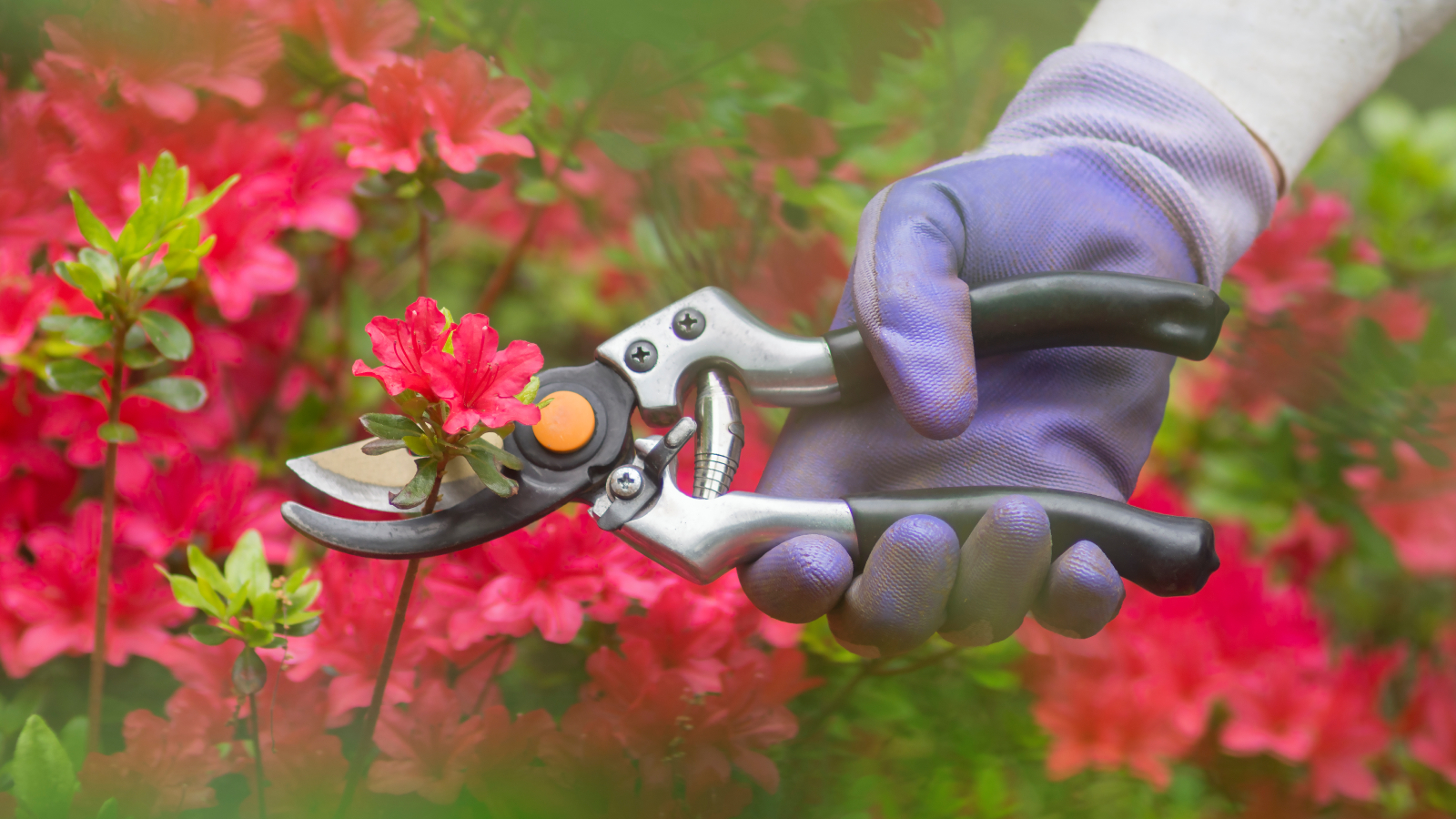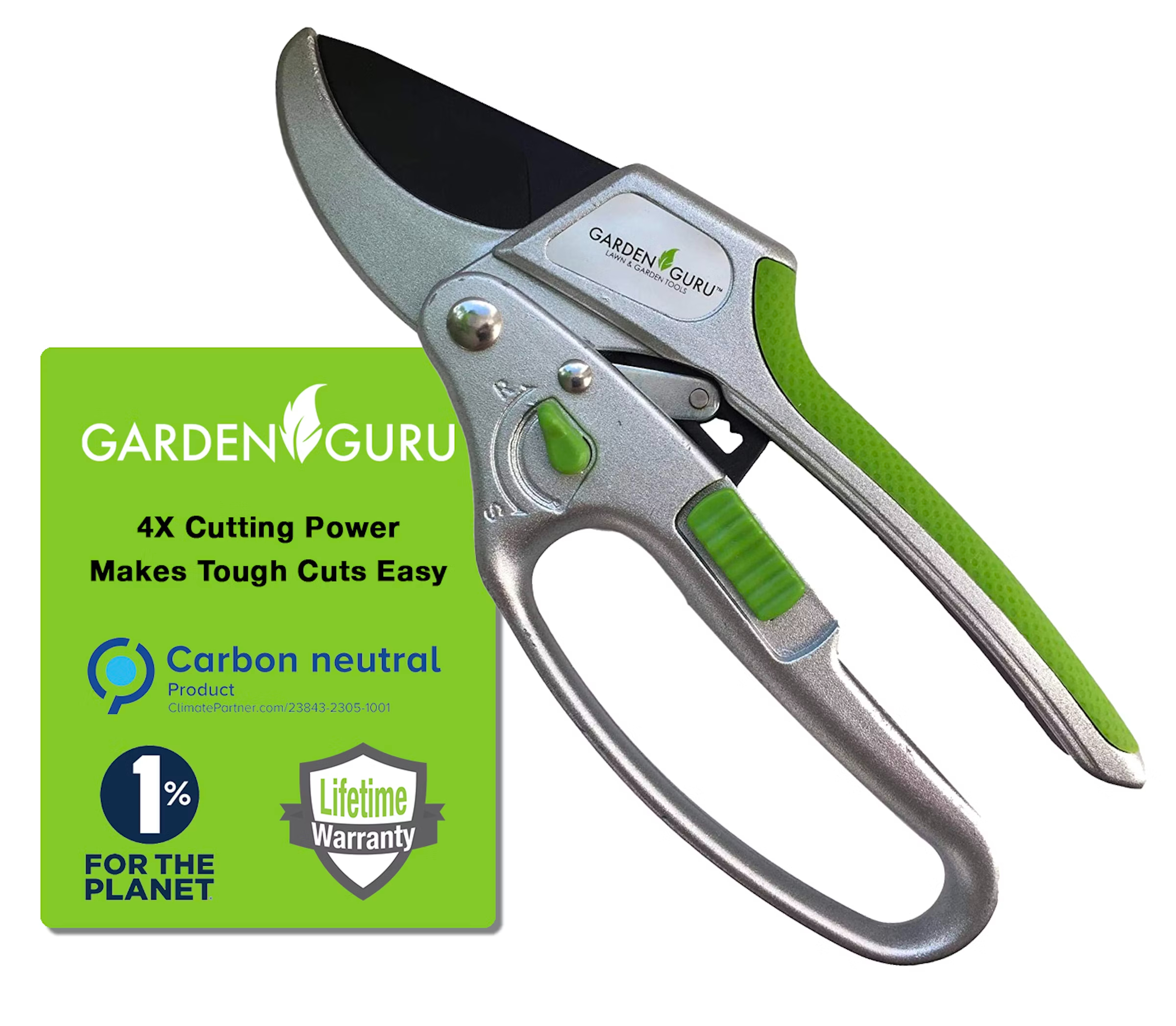Azalea Cuttings For an Infinite Number of Plants
Taking azalea cuttings to grow new azalea bushes is so easy. Fill your garden with new plants from your favorite azalea at no cost!
Amy Draiss

Taking azalea cuttings is fun and surprisingly rewarding. Buying established azalea plants at a nursery is not cheap, so if you have a favorite azalea you want to share or propagate to use elsewhere in the garden, we recommend using cuttings. Azalea plants do not necessarily grow true when they’re propagated from seed, so to get a true clone, you need to root a plant cutting. Azalea cuttings easily take root. Here’s what you need to know.

Prune with ease with the ratchet garden shears from Garden Guru. These heavy duty shears are perfect for pruning flowers and even small branches. Find in the Gardening Know How Shop.
Propagating Azaleas
Azaleas are spring flowering shrubs popular in landscaping and are related to rhododendrons. They are easy to grow and are beautiful options for shady corners of the garden. If you know how to propagate them correctly, you can get many more azaleas from one specimen.
You can grow azaleas from seed, but what you get you won’t get the same plant. If you want a new plant that’s exactly like what you already have, you’ll need to reproduce it asexually. So, take a cutting, coax it into rooting, and replant.
When to Take Azalea Plant Cuttings
The easiest strategy for propagating azalea by cutting is to clip new growth stems beginning in June, and usually any time through early fall. Why? The softer stems of new growth root more easily than older, harder stems. But note - if the cuttings are too soft, you might have issues with fungal infections. What you’re looking for is a semi-hardwood cutting. The stem shouldn’t be so hard it snaps, but it also shouldn’t be so soft that it is rubbery. A new terminal bud on a stem is another good indicator that the timing is right.
How to Take an Azalea Cutting
When you have a good candidate for a cutting, remove it in the morning. Use a sharp, clean pair of shears to cut the stem just below a node. The cutting should be four to six inches (10 to 15 cm) long. Remove all but a few leaves at the end of the cutting. If the terminal leaves are very large, you can cut part of them off. This helps the cutting retain more moisture as it grows roots.
How to Root Azalea Cuttings
- Using a rooting hormone is optional, but it will speed up the process. Evergreen azaleas root readily, but deciduous azaleas are tricker and can use a little help. Stick the cut end of the stem in the rooting hormone
- Place the cutting in a rooting medium rather than in soil. You can buy premade mixes or make a mixture using peat with perlite or vermiculite
- . Use a tray or container with drainage holes. Add the rooting medium and moisten it well with water and then place the cutting in it.
- Keep the medium consistently moist. Cover the container with plastic to create humidity. Keep the tray or container in a warm spot where it will get bright but indirect light. Too much direct light will overheat the cuttings.
Replanting Cuttings
Azalea cuttings can take anywhere from four to eight weeks to develop roots. At this time, partially remove the plastic covering and remove a little more of it each day for a few days. This will help the cutting acclimatize.
Keep your azalea in a container and indoors for its first winter to give it the best chance of success once you place it in its permanent location. This allows it to grow enough and develop adequate roots to survive outdoors the following season.
Sign up for the Gardening Know How newsletter today and receive a free copy of our e-book "How to Grow Delicious Tomatoes".
Plant your azalea in a partially shaded spot with rich, moist, acidic soil. Make any necessary amendments to the soil before planting. You can plant it in spring the year after rooting the cutting. Water it regularly for the first growing season.
Azalea propagation from cuttings is a little more complicated than taking soft cuttings from houseplants, but it’s not difficult. The most important factor is patience. Give the cutting time to develop good roots so it will grow successfully once planted outdoors.

Teo Spengler is a master gardener and a docent at the San Francisco Botanical Garden, where she hosts public tours. She has studied horticulture and written about nature, trees, plants, and gardening for more than two decades, following a career as an attorney and legal writer. Her extended family includes some 30 houseplants and hundreds of outdoor plants, including 250 trees, which are her main passion. Spengler currently splits her life between San Francisco and the French Basque Country, though she was raised in Alaska, giving her experience of gardening in a range of climates.
- Amy DraissDigital Community Manager

